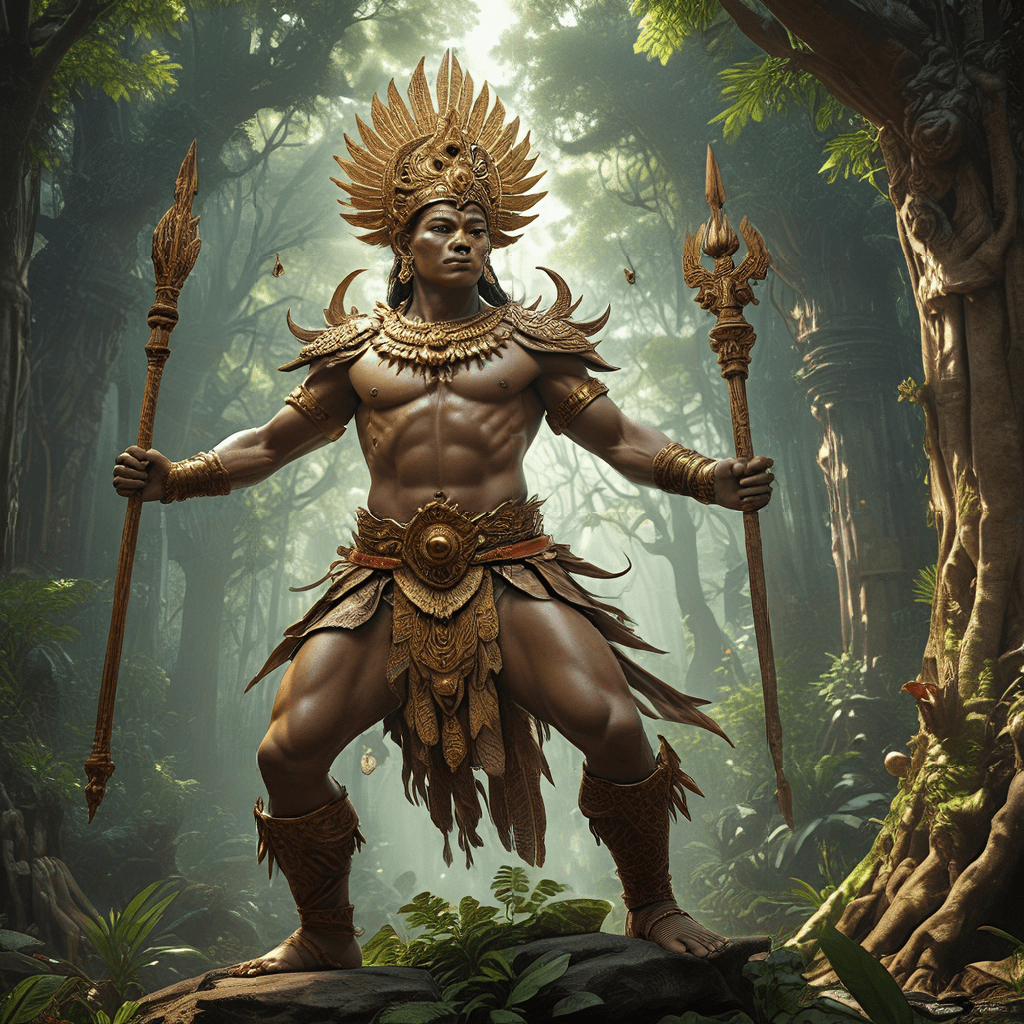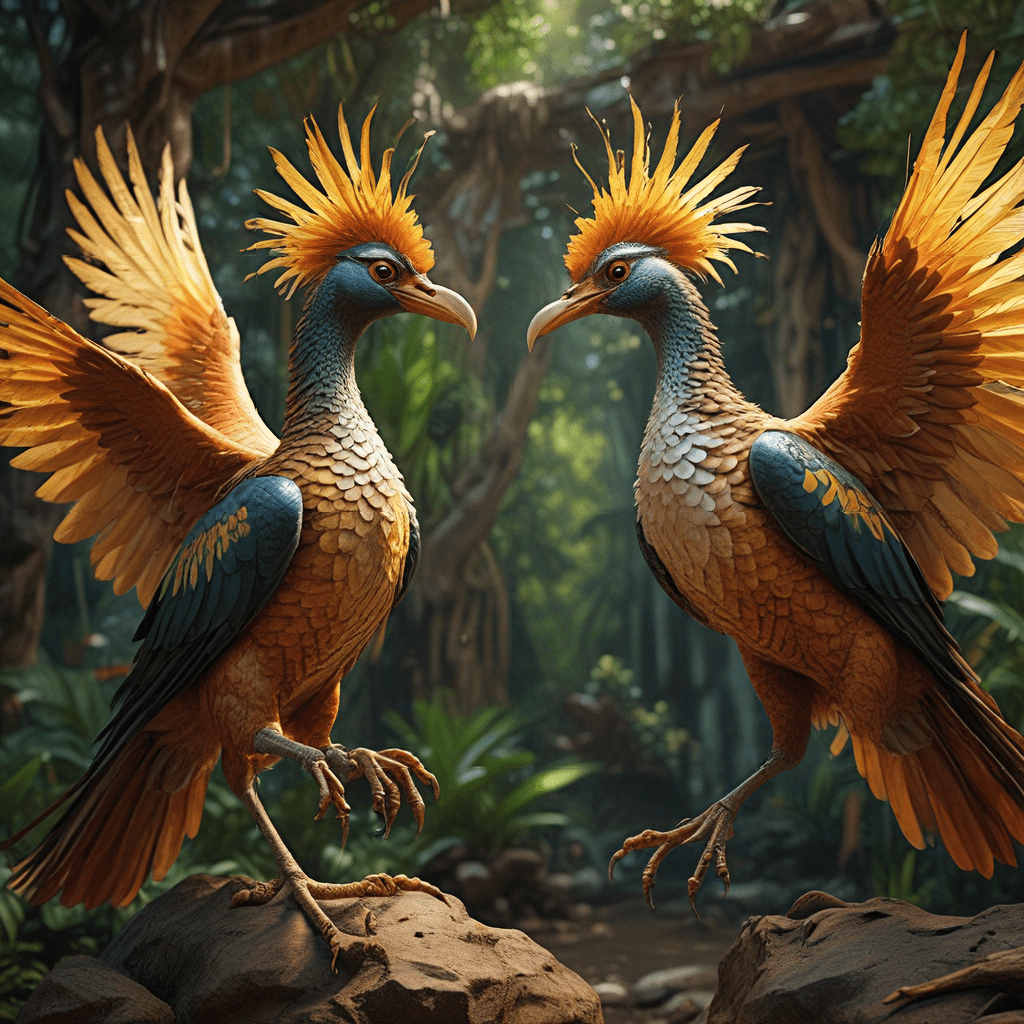Indonesian Mythology: Legends of Transformation and Growth
Introduction: A Tapestry of Transformation and Growth
Indonesian mythology is a rich tapestry of stories and legends that have been passed down for generations. These stories offer a glimpse into the cultural values, beliefs, and worldview of the Indonesian people. They are not just entertaining tales but serve as moral compasses, providing guidance and wisdom. Among the most prominent themes found within Indonesian mythology are transformation and growth. These themes are explored in intricate detail through the journeys of various characters and their interactions with the supernatural world.
The Mythological Landscape: Exploring the Realm of Deities and Spirits
Indonesian mythology is filled with a diverse cast of deities and spirits. These supernatural beings embody various aspects of nature, human emotions, and societal values. Some of the key deities include:
- Batara Guru: The supreme god, often associated with the sky, thunder, and justice.
- Dewi Sri: The goddess of rice and agriculture, symbolizing prosperity and fertility.
- Sang Hyang Widhi Wasa: The supreme being in Balinese Hinduism, representing the ultimate reality and the source of all creation.
Aside from deities, Indonesian mythology also features a wide range of spirits that inhabit different realms and environments. Some of these spirits include:
- Jin: Supernatural beings often associated with magic and mischievousness.
- Tuyul: A mischievous spirit that can steal money or objects.
- Sundel Bolong: A vengeful female spirit known for her horrifying appearance and haunting abilities.
These deities and spirits play pivotal roles in shaping the narratives of Indonesian mythology. They often interact with humans, influencing their destinies, offering guidance, or punishing wrongdoings. Their presence underscores the powerful influence of the supernatural in Indonesian culture.
The Power of Transformation: From Human to Divine and Beyond
Transformation is a recurring theme in Indonesian mythology. Stories often depict characters undergoing remarkable shifts, whether it's a mortal ascending to divine status, an animal taking on human form, or humans gaining supernatural abilities. These transformations not only serve as dramatic elements in the narratives but also symbolize the potential for growth, change, and evolution.
Mortal to Immortal
In one popular myth, a human named Raden Inu Kertapati undergoes a transformative journey. He sets out on a quest to find a magical herb that can grant immortality. After facing numerous challenges and demonstrating his unwavering determination, he finally obtains the herb and becomes immortal. His story highlights the common theme of humans striving for a higher state of being and overcoming obstacles to achieve their goals.
Animal to Human
Another interesting example of transformation involves animals assuming human forms. In the story of Bawang Putih (White Onion), a young woman is transformed into a beautiful woman by the magic of a powerful spirit. This story explores the idea of appearances being deceiving and the importance of perceiving people beyond their outward forms.
Humans Gaining Supernatural Abilities
Some myths feature humans gaining supernatural abilities through various means. For example, in the legend of Si Pitung, a young man discovers a magical amulet that bestows upon him the power to become invisible. His story explores the themes of power, responsibility, and the potential for both good and evil that comes with extraordinary abilities.
Growth Through Trials: Overcoming Challenges and Achieving Wisdom
Many Indonesian myths feature characters who embark on challenging journeys, facing trials and tribulations along the way. These trials serve as tests of their character, resilience, and ability to overcome adversity. Through these experiences, characters gain crucial lessons, wisdom, and personal growth.
One example is the story of Raden Pandji, a valiant prince who faces numerous obstacles in his quest to win the heart of his beloved. He battles mythical creatures, solves riddles, and navigates treacherous landscapes, all while demonstrating bravery, intelligence, and unwavering love. These challenges lead him to become a mature and wise ruler.
Another compelling story is that of Sangkuriang, who is cursed by his mother for his anger and disrespect. The curse leads him to a series of misadventures and eventually, the realization of his wrongdoings. This myth highlights the consequences of unchecked anger and the importance of seeking forgiveness.
The Role of Nature: Embracing the Cycles of Life and Renewal
Indonesian mythology is deeply connected to the natural world. Mountains, rivers, forests, and other elements of nature hold significant symbolic meaning and play vital roles in the stories. They often represent the interconnectedness of all things, the cyclical nature of life, and the potential for renewal.
- Mountains represent strength, resilience, and the source of life-giving waters.
- Rivers symbolize the flow of time, the journey of life, and the constant change and movement within the natural world.
- Forests embody the power of nature, the mystery of the unknown, and the potential for both beauty and danger.
The stories often use natural elements to symbolize transformation and growth. For instance, the transformation of a caterpillar into a butterfly, which is often depicted in Indonesian art and folklore, represents the metamorphosis of the soul, a journey from the mundane to the divine.
The Enduring Legacy: Myths Reflecting Cultural Values and Beliefs
Indonesian myths and legends are not simply entertaining stories; they are woven into the fabric of Indonesian culture, reflecting the values, beliefs, and worldview of the people. These stories provide a moral compass, offering guidance on topics like social conduct, respect for nature, and the pursuit of spiritual growth. They serve as a powerful tool for transmitting cultural knowledge and fostering a sense of shared identity.
For instance, the story of Raden Inu Kertapati highlights the Indonesian value of perseverance and determination. His journey to achieve immortality exemplifies the idea that through hard work and unwavering focus, one can achieve extraordinary feats. This story is not only about achieving immortality but also about reaching one's full potential as a human being.
Another example is the story of Bawang Putih, which emphasizes the importance of inner beauty and judging others based on character rather than appearance. This theme is embedded in the Indonesian cultural practice of valuing kindness, compassion, and humility over superficial qualities.
These myths are not merely tales of the past; they are woven into the fabric of everyday life. They influence cultural practices, rituals, and art forms, from traditional dances and shadow puppet plays to contemporary literature and film. Many Indonesian proverbs and sayings are derived from these myths, reflecting their enduring influence on the language and thought processes of the people.
Theories on the Origins of Indonesian Mythology: Tracing the Roots
The origins of Indonesian mythology are a subject of ongoing scholarly debate. However, several theories offer valuable insights into the evolution of these stories and their connections to other cultures and ancient religions.
One theory suggests that Indonesian mythology has roots in animism, a belief system that attributes spirits or souls to natural objects, places, and phenomena. This connection is evident in the numerous spirits found in Indonesian mythology, which inhabit various realms and environments.
Another theory suggests that Indonesian mythology has been influenced by Hinduism and Buddhism, which arrived in Indonesia around the 1st century AD. This influence is evident in the presence of Hindu and Buddhist deities in the pantheon of Indonesian mythology and the incorporation of themes common to these religions, like reincarnation, karma, and the pursuit of enlightenment.
There are also theories that suggest influences from pre-colonial indigenous beliefs and practices, particularly in the region of West Papua. These indigenous traditions often feature stories of ancestral spirits, nature deities, and the importance of maintaining harmony with the natural world.
The Impact of Colonialism and Modernity: A Shifting Landscape
The arrival of colonialism in Indonesia had a significant impact on its traditional beliefs and narratives. The Dutch colonial administration actively discouraged the practice of traditional religions and mythology, favoring Christianity and Western values. This led to a decline in oral traditions and the suppression of many myths and legends.
However, the resilience of Indonesian culture ensured that these stories continued to be passed down through generations, albeit in a modified form. With the rise of nationalism and independence in the 20th century, there was a renewed interest in preserving indigenous cultures and traditions. This led to a revival of interest in Indonesian mythology, with many stories being documented and analyzed by scholars.
Modernity has further influenced the landscape of Indonesian mythology. The rise of global media and the internet has exposed Indonesians to diverse cultures and perspectives, impacting how they view their own mythology. Some stories are being reinterpreted to resonate with a modern audience, using contemporary themes and symbolism. However, others are being lost to time as younger generations become increasingly disconnected from their traditional heritage.
Contemporary Interpretations: Reimagining the Legends for a Modern Audience
Despite the challenges posed by colonialism and modernity, Indonesian mythology continues to inspire artists, writers, and filmmakers. Modern artists are reimagining these legends in various mediums, from paintings and sculptures to plays, films, and novels. These contemporary interpretations offer a fresh perspective on traditional stories, reflecting evolving cultural values and contemporary social issues.
For example, contemporary Indonesian films often draw inspiration from mythology, reinterpreting classic legends for a modern audience. These films explore themes like identity, social justice, and the challenges of navigating a rapidly changing world. They also introduce contemporary elements, such as technology and social media, providing a new lens through which to examine traditional narratives.
Writers are also using Indonesian mythology as a source of inspiration for their works. They reimagine classic stories, creating new characters and storylines that resonate with contemporary readers. These retellings offer fresh insights into the complexities of human nature and the challenges of navigating a complex world.
FAQs
- What are some popular Indonesian mythical creatures? Some popular Indonesian mythical creatures include the Tuyul (a mischievous spirit that can steal money), the Sundel Bolong (a vengeful female spirit), and the Jin (supernatural beings often associated with magic and mischief).
- How does Indonesian mythology reflect the country's cultural diversity? Indonesian mythology reflects the country's cultural diversity through its vast array of stories and legends, which vary from island to island and region to region. Each region has its unique set of deities, spirits, and narratives, reflecting the diversity of Indonesian culture.
- How is Indonesian mythology preserved for future generations? Indonesian mythology is preserved for future generations through various means, including oral traditions, storytelling, art forms, literature, and film. Scholars and cultural institutions play a vital role in documenting, analyzing, and preserving this rich cultural heritage.
- What role does mythology play in Indonesian society today? Indonesian mythology continues to play a significant role in contemporary Indonesian society, influencing cultural practices, art forms, and contemporary literature and film. It provides a sense of cultural identity and connects people to their heritage, offering a framework for understanding the world and navigating the complexities of life.



